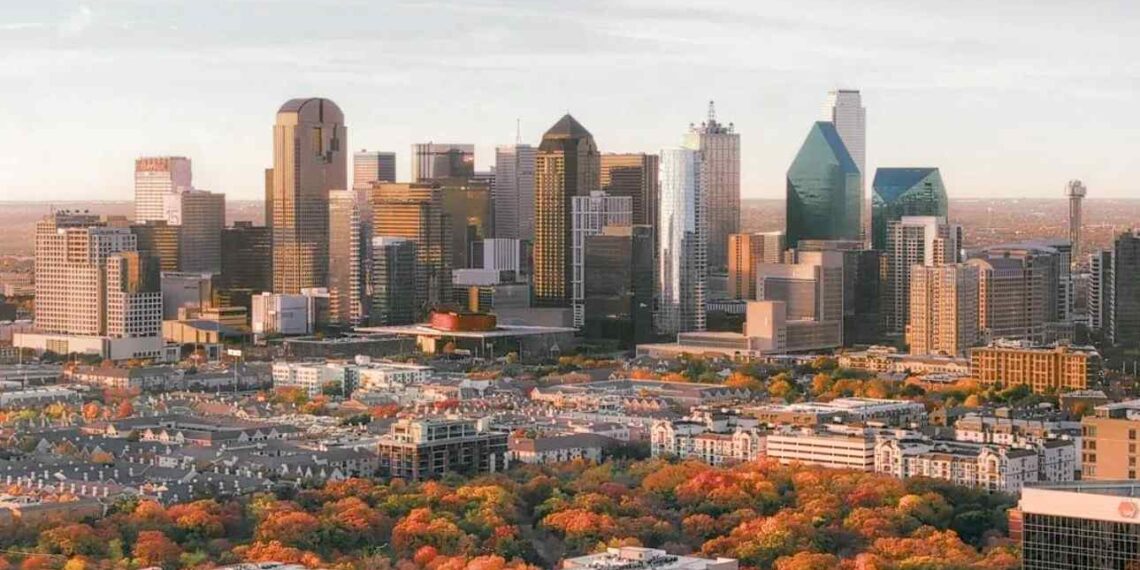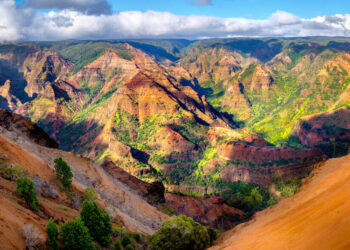Dallas stands firm across the North Texas expanse, a city where the sheen of towering glass meets the grit of an older earth. Its skyline cuts sharp lines against the heavens, a testament to modern craft, yet beneath lies soil shaped by the hooves of cattle and the resolve of those who claimed it long ago. This is a place of stark edges—culture woven with history, ambition set against memory—a domain that reveals itself only through careful study. Beyond its surface, Dallas holds layers of trade, sound, and quiet corners, each adding to its unyielding frame.
A Fact of Note: Dallas holds the largest urban arts district in the United States, a full 118 acres of ground. This breadth, a fortress of creative works, marks the city as a keeper of art amid its harder tales, a claim that roots itself deep in the city’s bones.
Places to Visit: An Overview
The offerings of Dallas form no neat array; they rise as separate strongholds, each bearing its own weight in the city’s story.
Arts District: At its core, the Dallas Arts District commands attention. The Dallas Museum of Art gathers treasures—stone coffins from Egypt’s sands, their carvings faint with age, beside bold strokes of paint that defy quick understanding. Near it, the Nasher Sculpture Center shelters forms by Rodin and Picasso, their lines softened by light that spills through a roof of glass, a quiet play that bids one pause. Galleries stretch further here, smaller halls with works of lesser name but equal force, their walls a testament to hands still shaping the craft.
Deep Ellum: Across the city’s weave, Deep Ellum stands apart, its brick faces slashed with murals—skulls, horns, strange eyes staring out. Pecan Lodge fills the air with smoke, its meats cooked slow to a tenderness that speaks of old ways. Sound drifts here, horns and strings, a thread pulled from days when blues ruled the night. Beyond the main lanes, tucked spots offer odd crafts—leather goods, ink drawings—each a mark of the district’s restless soul.
Dallas Arboretum: By White Rock Lake, the Dallas Arboretum and Botanical Garden spreads wide, its flowers—azaleas fierce in color—standing bold against the far-off city towers, a meeting of root and steel. Paths wind through, past fountains that catch the light, their stone basins worn by years of spray, a stillness that holds against the city’s hum.
Reunion Tower: Crowned with a green flame, Reunion Tower rises high. Its lookout shows Dallas in full stretch, a land that rolls out broad and deep, its end lost to sight. On clear days, the haze lifts, and the plains beyond hint at the vastness that birthed this place.
Dealey Plaza: Heavy with time, Dealey Plaza holds the Sixth Floor Museum, a keeper of Kennedy’s last day in 1963. Old images, a rifle stilled, and the street’s plain mark below carry a silence that cuts through the city’s hum. Nearby, the grassy knoll sits, a patch of earth that draws eyes and whispers, its quiet a weight of its own.
How to Reach
Dallas opens through paths of air, rail, and road, each its own gate.
Air Travel: Dallas/Fort Worth International Airport (DFW), a vast hub, sits 20 miles from the city’s heart. The DART Orange Line runs from there, 40 minutes of steel and motion to downtown. Taxis wait, their drivers keen—better to fix a ride before the rush. Smaller craft land at Love Field, closer in, a quieter gate for those who seek it, though its reach is less.
Rail Travel: Amtrak’s Texas Eagle stops at Union Station, a brick hold in the West End, its walls old and sure. From Chicago to San Antonio, it moves slow, showing fields and sky in steady turn. The station’s arches frame a past when rails ruled, a nod to hands that laid them.
Road Travel: Highways bind Dallas—I-35 north and south, I-20 and I-30 east and west, their ways thick with load when day runs high. Inside, DART buses and rails reach far, the McKinney Avenue Trolley rattling through Uptown, a small echo of past. A day’s pass serves, if one meets its pace. Lesser roads twist out, past warehouses and old lots, their turns a map of growth unchecked.
Frequently Asked Questions Concerning Dallas Climate
What rules the weather here?
Dallas weather bears a strong hand. Summer climbs past 100°F, sun a hard press. Spring and fall shift from 70°F to 90°F, now and then leaping beyond. Winter holds at 50°F, snow a faint chance, its chill more bite than blade.
What should one wear for it?
Light cloth meets the heat, a hat turns the sun aside. Inside, air bites cold—bring a cover. Rain comes sharp and short—an umbrella stands ready, its frame a shield for sudden fall.
Does it change what one does?
Heat weighs on open places—early or late hours ease it. Walls of museums and towers hold steady, cool within. Plans shift, but the city bends little.
What stands out in it?
Spring hints at storms, rare in the city’s stone. Humidity clings, a damp weight that settles deep, borne by dwellers with steady calm. Dust rises too, when winds turn dry, a grit that coats the air.
More of Dallas
Dallas has depths beyond its main gates. The West End Historic District keeps old frames, now full of food and small wares, its stones a mark of trade long gone. The Perot Museum of Nature and Science lifts bones of lost ages, its rooms a stir of wonder, glass cases holding shells and tools from earth’s deep past.
For trade, Highland Park Village shines, its arches holding fine things, walks lined with trees that shade the stone. Bishop Arts District turns rougher—coffee and art from near hands, its streets a patchwork of low roofs and odd signs. Night wakes it: the Meyerson Symphony Center sings clear, its notes a weave of craft, while Deep Ellum roars with free sound, its walls shaking with each beat.
The city’s edges hold more—markets of old stock, sheds of iron and wood, where folk trade goods of use, not shine. Fair Park looms too, its halls from a fair of decades past, their paint chipped but standing, a quiet boast of days when Dallas reached for more.
In Final Words
Dallas rises as a city of hard lines, its now built on then—towers from dust, Dealey’s still mark, Deep Ellum’s loud heart, the tower’s high eye. It asks not just to be seen but to be known, a Texas fastness that holds its ground, its roots deep, its reach wide.











